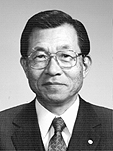
SUEMATSU Ken-ichi
Vice Chairman, Keidanren
Today, Kobe is being rebuilt at a speed that would have seemed impossible just after the disaster, thanks largely to the determined efforts of residents and local authorities. Once again the city is regaining its traditional brightness. Yet the task of rebuilding Kobe is not simply a matter of restoring the city to the state that existed before the earthquake. For it is vital that the lessons learned through the disaster are applied to the development of the new city.
Cities are centers for residence, industry and other activities, and traditionally it has been assumed that their shape should be determined primarily by the people that live in them. In the cities of postwar Japan, however, a preoccupation with economic growth has resulted in a tendency to overemphasize efficiency. Consequences of this distorted approach include overcrowding, the disorderly mingling of commercial and residential areas, and the deterioration of residential environments. In addition, Japanese cities have fallen far behind their European and American counterparts in terms of their ability to enrich human lives by providing environments that enable people to achieve serenity through nature, culture and the arts.
We must learn from these mistakes as we develop the cities of the future. We need to build cities that will be able to withstand disasters through the use of strategies that include the earthquake-proofing of structures and the reinforcement of infrastructure, such as telecommunications, transportation systems and lifeline facilities. We must also apply bold concepts to city planning in order to create urban environments in which people can live without fear and enjoy a truly enriched existence.
The concept of relocating Japan's capital will enter a new phase in 1996 with the start of specific moves to realize this goal. From the viewpoint of creating a grand design for the construction of the new capital city, I fervently hope that the reconstruction of Kobe will be based on a clearly defined vision that will bring the reborn Kobe lasting fame as a pioneer of urban development for the 21st century.